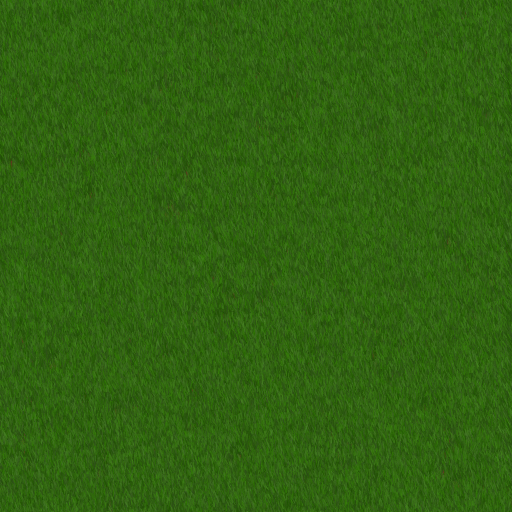

Keep it soft and adjust the intensity by playing with the layer transparency. Concentrate this in nooks and corners where dirt accumulates but also a bit over the whole model for broad dirt. With a very big, soft brush set to a mid brown color I start adding dirt. I create another layer and set it to multiply. Now that the basic texture is done, lets start dirtying it up. I also added a subtle drop shadow to the green layer to separate it a bit more from the yellow.

Using this as a selection I delete the chipped paint off the green layer, showing the underlying yellow layer. I then copy this layer into the alpha channel. Now with the wireframe picture as a guide I start painting in where paint is to be chipped off into a new layer using black and white, highly contrasted grunge photos with the clone stamp tool and some careful handpainting where it's needed. The result in Photoshop looks like the following picture. I then put in a layer of yellow paint and one of green paint, using several layered photographic maps as a base and coloring them. This layer will be the topmost one and always locked to prevent accidental painting. This way the black wireframe will show but everything that is white will be transparent, allowing you to see what you're painting. Within Photoshop I start out by copying the alpha channel into a normal layer and set it to Multiply. Here are the unwrapped meshes, ready to be painted on. Often you can get away by just estimating the texport aspect ratio as well. I wanted a map height of 800 pixels so the width would be 800x1.3=1040 It's not always neccesary to be this accurate but I do this to prevent getting maps distorted in one direction. Now I take a snapshot of the unwrapped meshes with Texporter and save as a TIF file (TGA is fine too, just make sure you get the alpha channel).

For this object I needed 1.3 tiles to 1 so the aspect ratio is 1.3 to 1. Turning on "Show Map in Viewport" is quite helpful here. The grid quadrats will most probably be distorted so I manually adjust the tiling to get the right map aspect ratio and make the squares quadratic. This is the model I'll use, a clunky looking part wating for some color.Īfter applying a uvw modifier and arranging in unwrap uvw I assign a grid texture to the objects. I used a similar technique for the BUB model seen in the gallery. Here I will show you how I create a painted metal surface worn by time with paint chipping off, revealing older paintwork underneath.


 0 kommentar(er)
0 kommentar(er)
